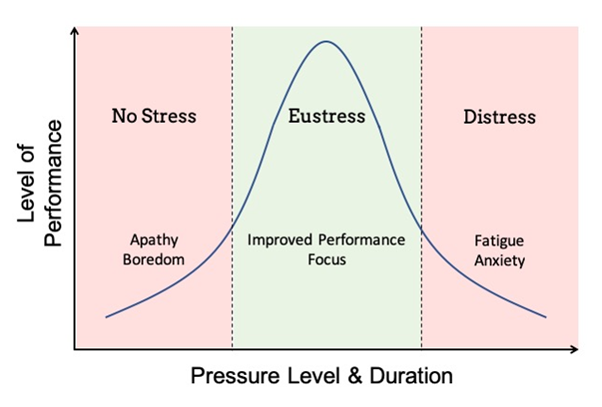How to recognise anxiety? These are the most common symptoms
Anxiety is probably one of the most common, if not the most common, group of mental disorders of the 21st century. But can we really say that we have an anxiety disorder at the slightest feeling of anxiety?
- PETRA ŠKABAR
Anxiety disorders are highly treatable, while statistics suggest that only 35% of all individuals with anxiety disorders seek professional help. The common symptoms of anxiety thus include phenomena that we have all experienced at some point in our lives.

- What are the symptoms of anxiety?
- Feeling nervous, restless or tense
- Feeling threatened, panicked or doomed
- Increased heart rate
- Rapid breathing (hyperventilation)
- Sweating
- Trembling
- Feeling weak or tired
- Difficulty concentrating or thinking about anything other than the present worry
- Difficulty sleeping Gastrointestinal (GI) experiences
- Difficulty controlling worries
- Desire to avoid the cause of anxiety
At some point, however, the above symptoms evolve into anxiety disorders, the most common of which is Generalised Anxiety Disorder (GAM), followed by Panic Attacks (which should be distinguished from Anxiety Attacks), Social Anxiety (or Social Phobia), Selective Mutism, Separation Anxiety Disorder, Specific Phobias and Agoraphobia (DSM-5; 2020). When diagnosing anxiety disorders, it is extremely important to see a professional who follows established manuals (e.g. DSM-5) for diagnosis and avoid self-diagnosis using non-established manuals (e.g. Google and self-help manuals).
What about the positive aspects of anxiety - are there any?
At this point we are asked the following question: What is the purpose of anxiety and what is its purpose?
1. ANXIETY AS A WARNING SIGN
Experiencing feelings of anxiety is something most normal and natural. Anxiety is the body's natural response to direct exposure to stress; it serves as a warning that helps to refocus attention on a perceived danger in the environment. When you perceive feelings of anxiety, ask yourself what it might be related to, where it might be coming from and what the triggers of the anxiety response might be. Feelings of anxiety serve as a warning sign that something needs to change in your life. Anxiety can therefore serve as an excellent source of information that something in your immediate environment is simply no longer working for you.
Here we can see an opportunity for change!
2. ANXIETY AS A MOTIVATOR
Even though the vast majority of us perceive feelings of anxiety as an obstacle or inconvenience, it can serve as a form of intrinsic motivation. Research (Hutchinson, 2007; Norgate and Stevenson, 2014) has shown that people perform better when feelings of anxiety are moderate. In the aforementioned situations, anxiety can serve as an intrinsic motivator to achieve goals, as it occurs as a consequence of positive stress, which is referred to as Eustress. Eustress is when our ability to cope is greater than the demands and it manifests itself as a pleasant, exciting, motivating and exhilarating feeling.

3. ANXIETY IN THE FIGHT-OR-FLIGHT RESPONSE
Anxiety has an important impact on our existence as it is the evolutionarily oldest reflex that allows us to survive. In our ancestors, anxiety served as a warning that triggered the flight or fight response and prepared the individual to react immediately to imminent danger in his or her vicinity. It is therefore one of the reasons why we have survived and persisted as a species all these centuries! A study by Wadsworth and Hotopf (2006) even found a correlation between the presence of anxious feelings and the longevity of an individual's life!
But what do we do when we detect symptoms of anxiety in ourselves?
Is panic an appropriate response, or are there useful tips for living and surviving with anxiety?
Is panic an appropriate response or are there useful tips on how to live and survive with anxiety?
Panic is completely unnecessary at this point. If you are experiencing anxiety symptoms for the first time, they are likely to be extremely distressing for you and your body. At that point, remember any relaxation techniques that suit you; a good and quick technique for dealing with anxiety symptoms is the BOX breathing technique. Box breathing takes its name from the title of the visualisation of a box with four sides. Each side represents one step of the exercise:
Step 1: Breathe in through the nose and count to 4.
Step 2: Hold your breath and count to 4
Step 3: Exhale through the mouth and count to 4
Step 4: Hold your breath and count to 4
Step 5: Repeat as many times as you feel necessary
If you experience symptoms frequently and they are extremely intense and long-lasting, we recommend you see a psychologist, psychotherapist, psychosocial counsellor or psychiatrist.
Article prepared for: ELLE.si
SOURCES:
- Parker KN, Ragsdale JM. Effects of Distress and Eustress on Changes in Fatigue from Waking to Working. Appl Psychol Health Well Being. 2015;7(3):293–315. doi:10.1111/aphw.12049
- Hardy L, Hutchinson A. Effects of performance anxiety on effort and performance in rock climbing: a test of processing efficiency theory. Anxiety Stress Coping. 2007;20(2):147–161. doi:10.1080/10615800701217035
- Owens M, Stevenson J, Hadwin JA, Norgate R. When does anxiety help or hinder cognitive test performance? The role of working memory capacity. Br J Psychol. 2014;105(1):92–101. doi:10.1111/bjop.12009
- Lee WE, Wadsworth ME, Hotopf M. The protective role of trait anxiety: a longitudinal cohort study. Psychol Med. 2006;36(3):345–351. doi:10.1017/S0033291705006847
- Tibi-Elhanany Y, Shamay-Tsoory SG. Social cognition in social anxiety: first evidence for increased empathic abilities. Isr J Psychiatry Relat Sci. 2011;48(2):98–106. PMID:22120444
- Diagnostic and Statistical Manual of Mental Disorders; DSM–5; https://www.psychiatry.org/psychiatrists/practice/dsm
- Anxiety and depression association of America;
https://adaa.org/about-adaa/press-room/facts-statistics


